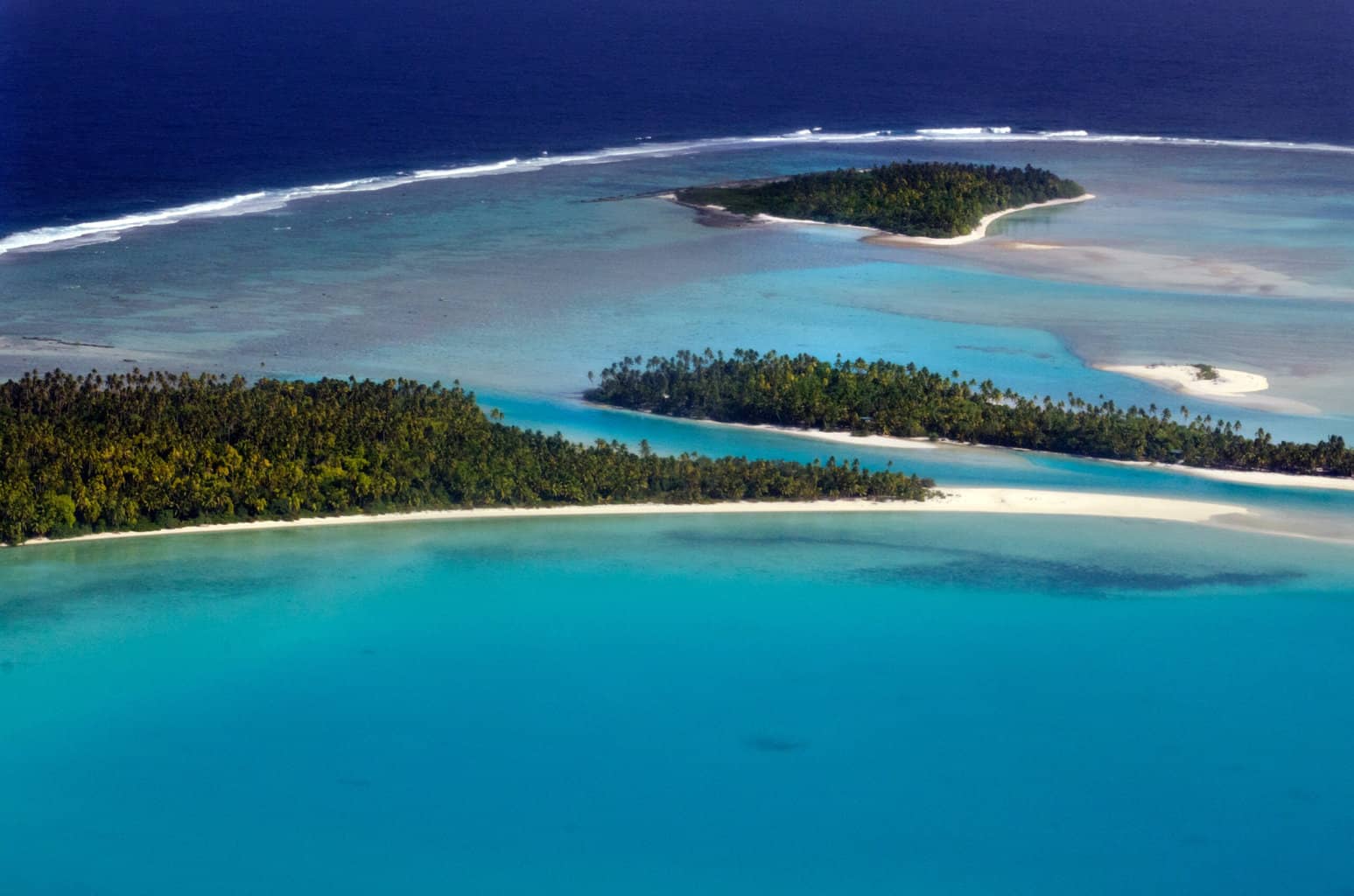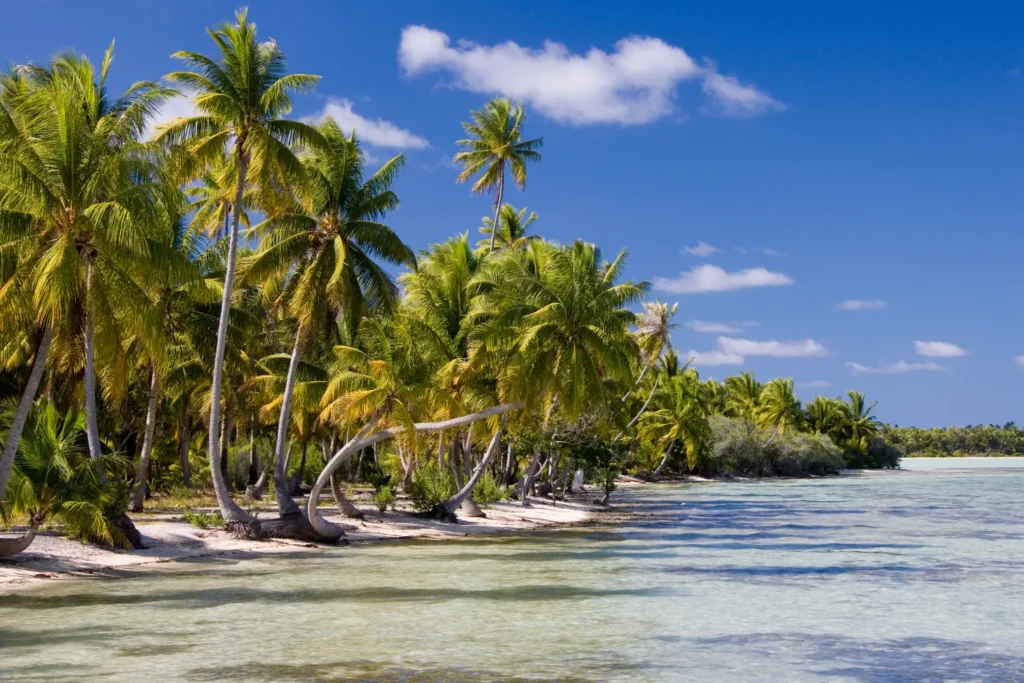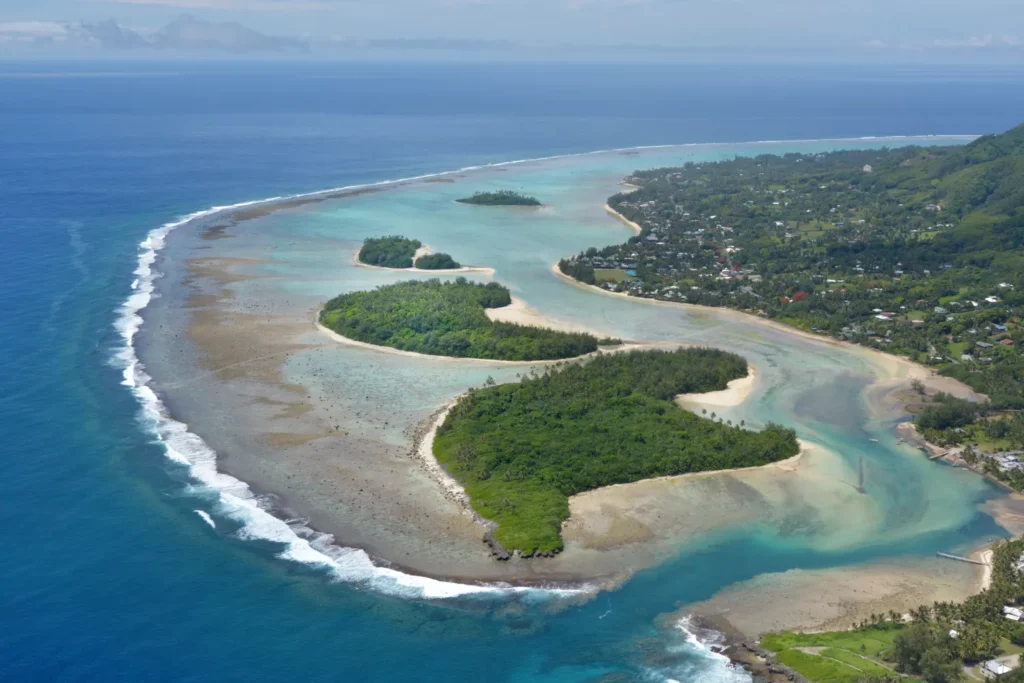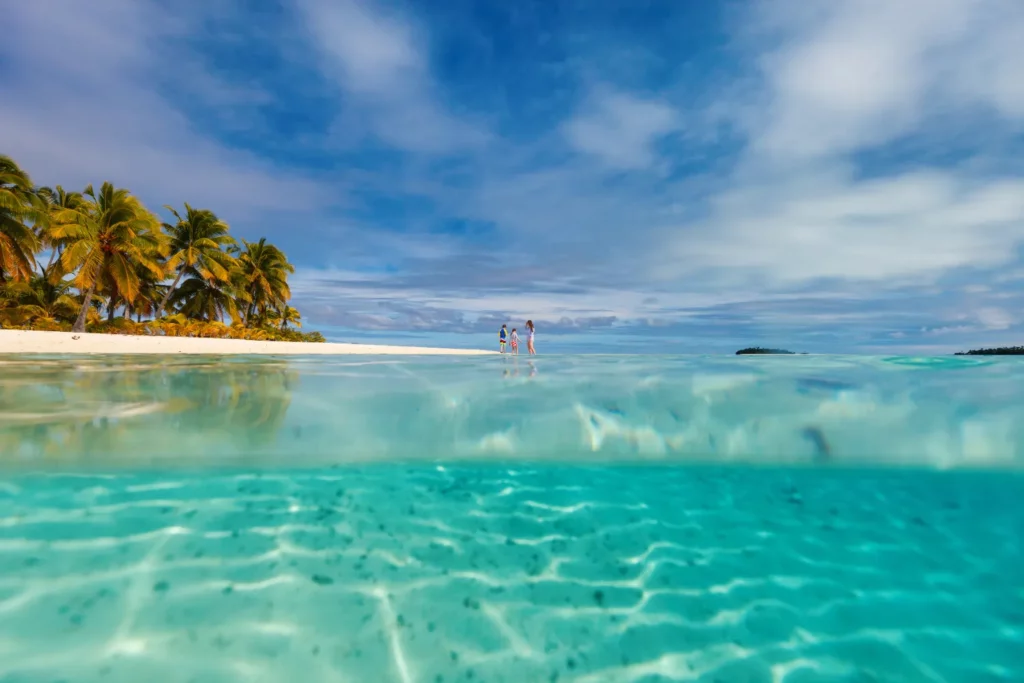Spectacular Facts about Cook Islands and Why They Make Your Next Best Travel Destination

Updated On: November 09, 2023 by Noha Basiouny
There are countless summer travel destinations that provide fantastic, lively, amazing never-to-forget experiences. From the outside, these places might, more or less, seem similar. After all, what do most people look for in a summer vacation? Yes, good hotels, clear water, golden-sand beaches, all-they-can-eat buffet and a constant supply of cool fresh tropical drinks.
Although this is all available in all coastal cities, in reality, every coastal city is pretty unique. Whether it is nature, the people, weather, cuisine, or even the mood travellers welcome it with, every place is pretty much unlike the others and is promising for providing a whole new and different experience.
One such place is the Cook Islands. Although many people—are you one of them?—might not have heard of them before, they are a fantastic summer destination, a mere tropical unspoiled paradise of crystal clear waters, lush forests and amazing weather guaranteed to wash away year-long stress and provide you with a relaxing, enjoyable vacation.
In this article, we are precisely exploring the Cook Islands and learning some amazing facts about them that will make you add them to your travel bucket list if you do not already start packing. So bring a cup of coffee or a tall cool cup of strawberry juice to match the context, and read on.
Cook Islands

As the name suggests, the Cook Islands are many, basically 15 islands, with a total area of 240 square kilometres located somewhere in the South Pacific Ocean that is 5,184 kilometres away from Australia and 3,260 kilometres from New Zealand. But because they are islands, they are scattered in an area of two million square kilometres.
Collectively, all 15 Cook Islands have a population of 17,612 people. Aside from those, over 8,000 Cook Islanders live in Australia and New Zealand.
Unlike Easter Island, which is officially a territory of Chile, Cook Islands is a self-governing island country that has been long associated with New Zealand but started to manage its very own affairs in 2001. That said, all the Cook Islanders are citizens of New Zealand; they use the New Zealand currency and speak English, well 86% of them do.
Besides English, 76.2% of Cook Islanders speak Maori, which is an Eastern Polynesian language that apparently survived over a thousand years.
The 15 Cook Islands are divided into two groups, the Northern and the Southern Cook Islands. The northern ones are those closest to the Equator, and the southerners are, yes, further away. All of these islands are basically atolls. As geography defines them, atolls are islands looking like rings, incorporating coral reefs and encircling lagoons.
The northern islands are six, with their areas ranging between one and 10 square kilometres. The southern islands, on the other hand, are nine. The smallest is only one square kilometre in area, while the largest is 67 square kilometres.
This largest island is Rarotonga. It is also the most developed, most accessible and most populated of them all, with some 13,044 people living in it. That is about 74% of the total population of the Cook Islands. Rarotonga is also home to the capital of Avarua, which is basically a district on the island and where the only international airport in the entire country is found.
That said, only one other island, Aitutakkai, had a population of over a thousand people. That of the remaining 13 islands range between 58 and 499.
Discovery
It is believed that the Polynesian people who are thought to have migrated from Tahiti settled on the Cook Islands in the year 1000. In the late 16th century, the Europeans found out about these islands. But it seems like every daring navigator who had the guts to sail as far as the Southern Pacific Ocean had encountered a different island on a completely distant date.
First, a Spanish explorer made a sighting of one island in 1595, and another Portuguese captain made the first European landing on another island. In the 17th century, British captain James Cook visited the islands twice.
Eventually, the Cook Islands were claimed under the British Crown in 1888 and completely annexed by the beginning of the 20th century. Then, again, they were included within New Zealand, which at the time was a British colony. In 1965, they were finally granted self-governing.
Ironically, Captain James Cook did not really land on any of the Cook Islands. He only gave the name Hervey to one island that was originally called Manuae. Yet, it was the Russians who decided in 1823 to name all the islands after Captain James Cook in a way to honour him!

Why Visit Cook Islands
Tourism is the primary industry of the Cook Islands and what the economy is mainly both made of and depending on. Besides tourism, the country relies on exporting fish and fruit to draw some hard currency inside.
Let’s now explore some facts that make the Cook Islands a very special travel destination.
1. Fantastic Weather All Year Long.
The first thing the Cook Islands are blessed with is their weather.
Unlike most other countries which you should check their weather before you travel to them and then pack accordingly, Cook Islands are pretty mild all year long.
Since they are tropical, the Cook Islands recognise only two seasons, not winter and summer, in the context most people are familiar with, but rather a dry season and a rainy one, and both feature warm and sunny climates.
The dry season begins in early April and ends in November. This is when the temperature is 26°C on average. The rainy season, on the other hand, lasts from December to March. Here it gets warmer as temperatures rise to 30°C at the maximum. It also feels a little humid, and you can expect some rainfall during these months.
You can, however, think of the dry season as winter and the rainy season as summer. Note that the Cook Islands are located in the Southern Hemisphere, which means seasons there are opposite those in the Northern Hemisphere.
This is a plus point. You do not really have to bother checking the weather map before you buy your ticket to the Cook Islands. Any time of the year would just be pretty convenient.
That said, the best time to travel to the Cook Islands is the beginning and end of the dry season, that is, April and May, as well as September and October, if you are not a big fan of summer rain.
2. Stunning Rarotonga.
Usually, the Southern Islands are generally more developed and accessible than the northern ones, which tend to be more isolated and rather raw.
The southern island of Rarotonga is the most developed in terms of infrastructure and is the number one tourist attraction in the county. It has options that suit all budget levels and a wide range of facilities, such as accommodation, restaurants, shops and markets and car rentals. That is why it is the most visited island of them all.
Having said that, Rarotonga does not really feel like a city. Despite the development, it is still a pretty natural place as the government and the locals dedicate a lot of effort as well as financial resources to take care of their environment and protect the island’s distinct ecosystem.
Although it is the largest island, Rarotonga is pretty small. The road around it, its diameter, is only 32 kilometres, and it has only two roundabouts. Tourists can get around the island in rented cars or scooters, for which they must get a special licence from the police station.
Driving in Rarotonga can never be as risky as in other places. The speed limit is only 50 km/h in some places and even 30 km/hr in others. The island does not even have any traffic lights!
If they are not into driving, tourists can instead take public transportation, which is basically one of only two buses available on the entire island. As one goes clockwise and the other goes counterclockwise, the two buses go all around the island and pass by every facility.
In that matter, and thanks to the small size of Rarotonga, there is little to no traffic.
Another beautiful tourist attraction in Rarotonga is the Te Ara, or the Cook Islands Museum of Cultural Enterprise, which hosts exhibitions about the local culture and history of the Cook Islands. It is a must-visit for anyone who wants to get some insights into this beautiful country.
If they are not into public transportation either, tourists can enjoy getting around on foot. Thanks to the low traffic, walking can be a very enjoyable and relaxing activity, as well as shopping, exploring the island, and gazing at the beautiful nature of Rarotonga.
3. Heavenly Beaches and Crystal Clear Waters.

Besides the moderate weather, another main, yet much more alluring, characteristic of the Cook Islands is their stunning beaches. All 15 islands have blue lagoons of crystal clear water, terrific coral reefs, white sand and lush rainforests. Each of the Cook Islands has a number of captivating beaches as well.
Some wonderful must-visit beaches in Rarotonga, for instance, are Muri Lagoon, Titikaveka Beach, Aroa Beach, and Black Rock Beach—do not confuse it with that one in Hawaii.
In Rarotonga especially, where more options are available, tourists can try different enjoyable activities, such as snorkelling, diving, kayaking, stand-up paddleboarding, kite surfing, canoe paddling, bodyboarding and surfing.
Other southern islands might not have the same options as Rarotonga. Yet, their amazing nature, differently structured lagoons, and beautiful reefs make visiting them totally worth it. After Rarotonga, tourists are recommended to spend a few days on another island called Aitutaki.
Aitutaki is way smaller than Rarotonga, with an area of only 18 square kilometres. Yet it is the second most populated island with a population of almost 2000 people. Two stunning beaches tourists can enjoy in Aitutaki are O’otu Beach and Akaiami Beach.
Mangaia and Atiu, with their alluring beaches and rocky caves, are two other islands tourists can enjoy spending some time on.
All these four islands are the most famous, the most accessible and most visited ones. That is why all of them are quite protected. Tourists have to follow the rules and regulations of every beach to help preserve marine life and make sure they do not cause any minor damage to it.
And speaking of accessibility, for some reason, moving between islands by boat is not an option in the Cook Islands unless you have your very own, not necessarily lavish, private yacht. Instead, islands are reachable by domestic flights.
So you need to plan ahead of your trip which islands other than Rarotonga you wish to visit to make sure a flight to your specified island would be available during the time of your stay. Sometimes, domestic flights to certain islands might be a little limited.
In all those islands, tourists can enjoy exploring the amazing marine life by going snorkelling, diving or scuba diving to see the uniquely colourful coral reefs all these islands are famous for, watch different schools of fish, eagle rays, moray eels and starfish and swim with turtles.
If your vacation is anywhere between July and October, you might get the chance to sight humpback whales as they happen to be in the Cook Islands’ waters at that time. Such massive creatures are phenomenal, and seeing them that close is a unique experience. If you are even luckier, you may see them splash, blow or fluke.
4. No visas are required.
One thing that can be a bit hectic while preparing for a trip overseas is obtaining a tourist visa for the country one is travelling to. Although tourist visas are the easiest to obtain, some countries might have some unpleasant restrictions that take away some of the joy of the trip.
But things are the exact opposite with the Cook Islands, for the country does not require any visas whatsoever. All tourists have to get is a permit which is issued upon their arrival at the airport of Rarotonga.
All tourists are granted a stay of up to 31 days in the Cook Islands as long as they present a return flight at the airport. New Zealand passport holders, lucky for them, do not need a return flight to enter the country, and they are even granted a stay of up to 90 days. This is how beloving neighbouring countries should be treating one another, by the way.
Speaking of New Zealand and Australia, tourists can get to Rarotonga from there on direct flights, which are pretty frequent. Other direct flights from the United States are also available. Yet, from other countries, flights usually have multiple transits, depending on the distance they are flying. Such flights are also expected to be long and, well, costly.
5. Friendly people.
The Cook Islands, including Rarotonga, have a pretty relaxing, slow-paced lifestyle which has a tremendous impact on the general mood of the country. Cook Islanders are, in fact, one top reason why this country has tourism as the main industry.
The locals in the Cook Islands tend to look quite relaxed and comfortable. There is no rush whatsoever. They are very friendly, gentle and generous. They meet each other as well as tourists with such big welcoming smiles on their faces and smiles, as we all know, are contagious. Even their colourful clothes with those beautiful flower and fruit prints make them look even more cheerful.
Besides, the fact that over 80% of the entire population officially speaks English lifts a huge burden off the tourists’ shoulders since communication is now so easy. No one has to use Google Translate to ask how much a slice of melon costs unless they want to impress a local by speaking Maori instead of English, of course.

One last thing..
Because the Cook Islands are, well, so remote, it is not only their seasons that are unalike, but their time zone is also quite a thing.
The Cook Islands have a time zone of GMT-10. If you live in Germany, for instance, when it is Sunday 6:00 pm your time, it will be Sunday 6:00 am in the Cook Islands. So they are basically half a day behind, or Germany is half a day ahead of them.
Do you know what that means? Yes, every country that is ahead of the Cook Islands literally lives in the future while the Cook Islands are still in the past!
In other words, if you are coming from afar, you can expect some unpleasant jet lag upon your arrival. So try to be OK with that, or if you do not want to waste a minute of your long-awaited trip to the Cook Islands, try getting prepared prior to your visit.
While tropical islands are what many people usually travel or think of travelling to in order to have an enjoyable summer vacation, many other places also make perfect summer destinations and might be even more budget-friendly. So make sure you check our new guide if you still have not decided where to go this summer.






